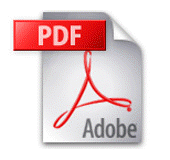IUCN / SSC Cat Specialist Group - Digital Cat Library |

|
||||||||||
 |
||||||||||
|
|
| Morales, M.M.; Giannini, N.P. | |
| Ecomorphology of the African felid ensemble: the role of the skull and postcranium in determining species segregation and assembling history | |
| 2013 Journal of Evolutionary Biology (26): 980-992 | |
Morphology of extant felids is regarded as highly conservative. Most previous studies have focussed on skull morphology, so a vacuum exists about morphofunctional variation in postcranium and its role in structuring ensembles of felids in different continents. The African felid ensemble is particularly rich in ecologically specialized felids. We studied the ecomorphology of this ensemble using 31 cranial and 93 postcranial morphometric variables measured in 49 specimens of all 10 African species. We took a multivariate approach controlling for phylogeny, with and without body size correction. Postcranial and skull + postcranial analyses (but not skull-only analyses) allowed for a complete segregation of species in morphospace. Morphofunctional factors segregating species included body size, bite force, zeugopodial lengths and osteological features related to parasagittal leg movement. A general gradient of bodily proportions was recovered: lightly built, long-legged felids with small heads and weak bite forces vs. the opposite. Three loose groups were recognized: small terrestrial felids, mid-to-large sized scansorial felids and specialized _Acinonyx jubatus_ and _Leptailurus serval_. As predicted from a previous study, the assembling of the African felid ensemble during the Plio-Pleistocene occurred by the arrival of distinct felid lineages that occupied then vacant areas of morphospace, later diversifying in the continent. |
|
 |
PDF files are only accessible to Friends of the Cat Group. Joining Friends of the Cat Group gives you unlimited access and downloads in the Cat SG Library for one year, and allows you to receive our newsletter Cat News (2 regular issues per year plus special issues). More information how to join here |
(c) IUCN/SSC Cat Specialist Group ( IUCN - The World Conservation Union) |